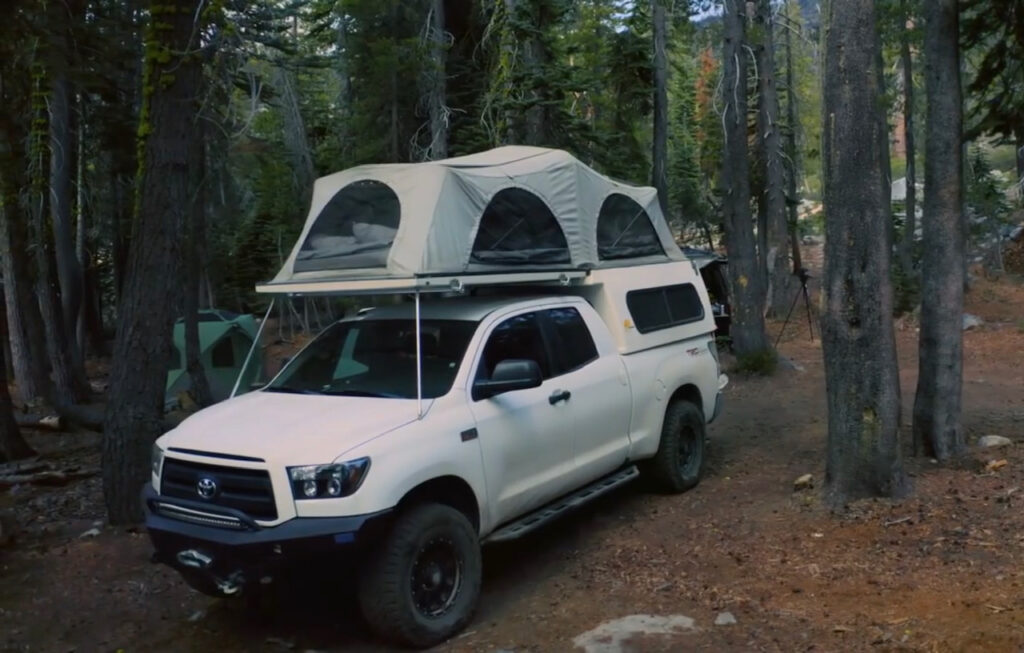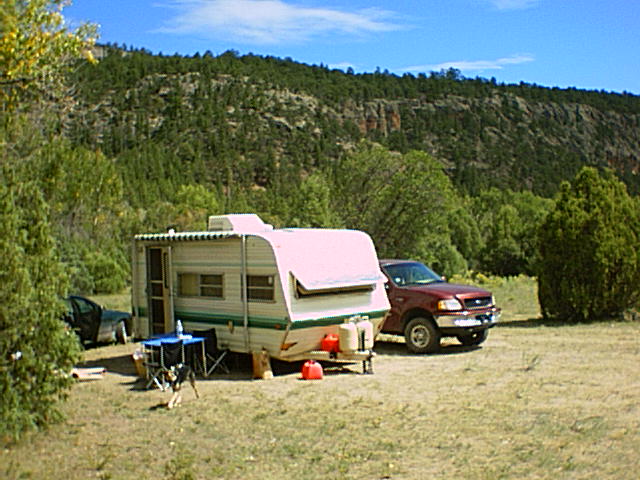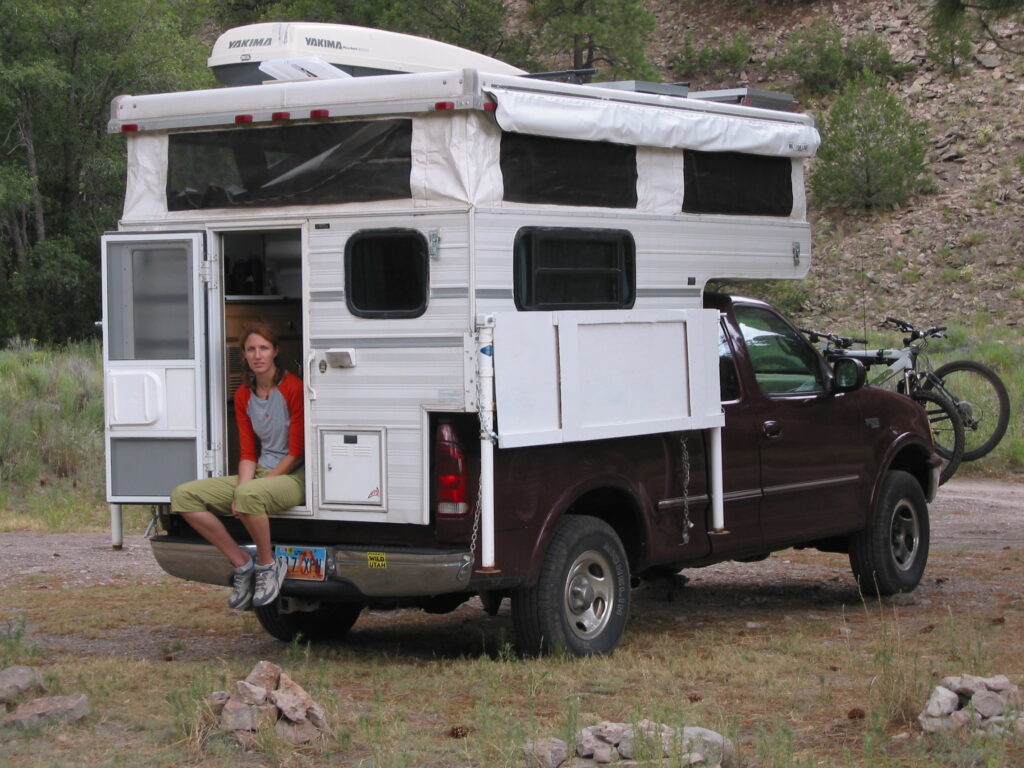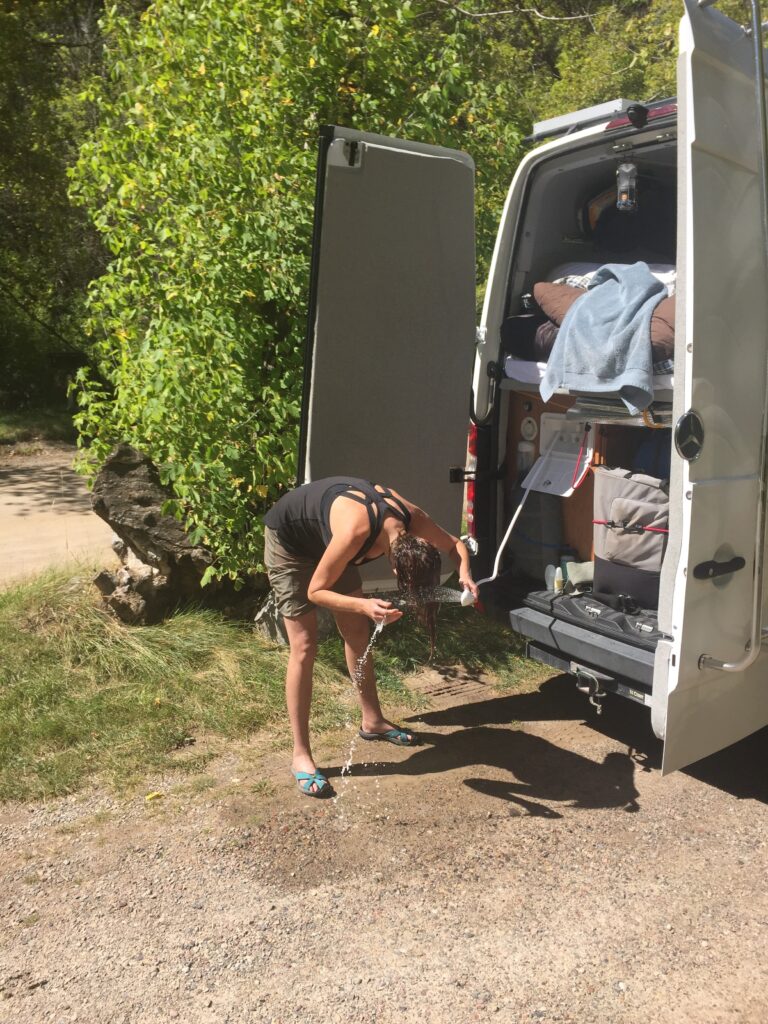With COVID travel restrictions and the summer months upon us, domestic travel and road tripping is soaring in popularity. The RV rental scene is blowing up, and we’ve noticed lots of professionals talking about them.
This type of travel isn’t new to us and is in fact the foundation of our love for slow travel. You see, rock climbing trips are all about car camping. It can be done without an RV, but backpacking all your gear with tents and food is tough. All rock climbers understand the power of a car camping “rig” to make their nomadic dreams come true. A compact, portable and yet comfortable setup that allows you to be freely mobile to get anywhere you need to go but also experience a warm, good night’s sleep is key to a successful climbing or hiking trip.
Over the past 25 or so years, with trips under our belts ranging from simple weekenders to multiple months in length, we’ve tried and tested many types of recreational vehicle arrangements. These include:
- truck with a hard top shell
- truck with a flip top cover
- truck with a pull-behind trailer
- truck with a pop-up camper
- camper van
Yes, the same truck was used for all of these rigs except for our most recent van. Even in the early days of our climbing experience, we knew we’d be doing lots of camping and road tripping… so Dawn’s first big purchase when she got a “real job” after college was a Ford F-150. Now, these trucks are not cheap, but we knew that their size would be amenable to any RV setup we decided on.

Truck with Hard Top Shell Camper
We started out car camping in the back of our truck with a hard top shell. These can be purchased at a reasonable cost aftermarket and painted to match your truck. We used bouldering pads for bedding and used the back seat of the truck for our gear storage. The ultimate in versatility and stealthiness, many climbers and vagabonds (especially single ones) travel endlessly with this type of setup. They even construct elaborate shelving systems in the camper shell that allow for a mattress atop drawers and storage compartments. We’ve even seen slideout cooking areas.
For us, negatives of this setup were that we’re generally too tall to be comfortable for long trips – especially if we had built a shelving system under the mattress like many do. At this point in our lives with a dog and a child, this arrangement would simply not work. But at the time, it was a great starting point.
Truck with Flip Top Camper
As a slight twist on the hard top setup, we briefly tried a flip top on our truck bed. These toppers are a hybrid between a truck bed shell (as above) and a tent, opening up to reveal soft sides with an elevated roof, expanded bedding area, and window screens. Like bunk beds, the flip top adds extra sleeping space that could potentially work for a small family, unlike the simple truck bed described above. We have friends that use this type of RV with a small child, and they love it. It seemlessly integrates with your vehicle and requires very little effort to set up – a huge barrier to enjoying more elaborate RVs.

Flip tops sure don’t afford stealth camping in the open position, and they’re best used in mild weather. Why should “stealthiness” matter? Depending on where you’re planning to use it, your RV may not need to be stealthy. But if you do long trips that require overnight stays on the way to your destination, it’s nice to be able to just pull off and camp somewhere without being super conspicuous.
Similar to the hard shell, the flip top situation was a bit small and stifling for us on any trips longer than a couple of nights. It didn’t add enough in the way of room. We bought ours used from a neighbor and pretty quickly sold it again.
Truck with Pull-Behind Trailer
Our next rig was a complete about-face from these compact truck camping scenarios: a 16 foot, pull-behind, hard-side trailer. We affectionately named her Betty. We lived in Betty for months at a time – both on BLM land in the middle of Colorado and in an RV park amongst retirees at the edge of Pacific Beach in San Diego while Trent did a law school internship. The image of him stepping out of the trailer in a full suit on his way to work is ingrained in our minds forever.
One summer, we took Betty around the entire western US from California all the way to the northern border and back down again through the rockies to southern New Mexico. In the fall of 2000, Master’s Degree and Juris Doctorate in hands, we drove Betty across the country to climb in the eastern and southern US. And when we settled in Salt Lake City, we lived in her at the airport RV park before closing on our first home. Dawn even wrote her medical school application essay about Betty – surely a reason to be accepted.
Trailers range from simple to luxurious, with size being a major operative factor. The tricky thing with trailer size, just like with a home, is that bigger is not necessarily better. For each family and corresponding tow vehicle, there will be a sweet spot in trailer size that affords reasonable towing speeds and ease of setup. Larger trailers require more powerful (and expensive) vehicles, and the fuel costs will add up quickly. On top of that, you have to store it somewhere. And every time you want to use it, you have to go through the ritual of attaching it to your vehicle. This is not always quick and easy. You don’t just jump in and take off with this kind of RV.

Another factor to consider when deciding on a pull-behind is where you’re planning to travel. It’s difficult to boondock (camp off the beaten path with no hookups or services) in large RV’s, and even some RV parks have a length limit for their spaces. Plus, if you buy a huge, fancy trailer and then never use it, what good is that? Depending on the size of your family, we’d recommend staying in the 15-30 ft range.
We loved Betty and have great memories of our adventures with her, but as climbers who preferred to camp in more remote areas, her size eventually became tiresome. When we were done with her, her walls were barely holding together, but some family graciously bought her for parts.
Truck with Pop-Up Camper
Of all our rigs to date, the truck with a pop-up camper was the one we used the most – from many a weekend in Central Utah to a 3 month road trip. The setup was very user-friendly: the camper slid into the truck bed and cranked up to a nice inside standing height of 6’8″ when in use. It was easy to take on and off the truck as well, given the included jack stands that cranked up and down. We each could easily set up the camper on our own if necessary, and the cabover queen bed gave us a feeling of spaciousness in a very small area.

We traveled from Utah north to the border, through the beautiful mountains of western Canada, and back down through the pacific northwest one summer in this rig, and we were almost always comfortable. The only real negative to this RV for us was that, similar to the flip top campers, it didn’t give us that stealth factor that we sometimes wanted.
We bought this pop-up camper only slightly used, and it lasted through 10 years of adventure. Around the same time that the siding started to leak and disintegrate, the old red truck also took its last breaths. We thought of replacing this setup with newer versions of the same thing, but a new kind of rig was also calling…
Van
Being that we’re a family consisting of a doctor and a lawyer, Dawn’s dad once expressed dismay at our pattern of ho-hum vehicle choices. He said one day nonchalantly, “Eventually you’re going to want a Mercedes.” Well, I guess we’ve finally “made it” because we have one now – a Mercedes Sprinter van. Her name is Vanna White.
Van life, made popular by climbers, mountain bikers, surfers and more, has hit its stride with all sorts of tricked out gear customizations that you can commission at various businesses around the country. Volkswagon vans and buses used to corner this market in the days of hippies, and then there were Roadtreks and the like. The new generation of camper vans are built inside tall delivery-style vans made by Mercedes, Ford, and Nissan. We customized our own van, bought slightly used and bare. It took several months of weekend work, mostly be Trent (as Dawn was pregnant and fatigued most days). It cost us less than $10,000 to do everything.

It’s been nice to have an all-in-one setup, where you don’t have to get out of the car in order to enter the “camping” part of the RV. We really craved that versatility for camping with a baby. Surprisingly, the Sprinter is also fairly easy to drive. It fits in a normal-sized parking space at the store, can hit highway speeds just like any other vehicle, and the diesel gas mileage is pretty good. The downside to having an RV with an inseparable vehicle portion is that if it ever breaks beyond repair, you can’t “just replace the truck”; the whole thing has to go.
Now that Aspen’s not a baby anymore, we’ll admit the van feels a little bit tight on space (a perpetual issue for us, I guess). However, kids can sleep across the front seats via various apparatuses that you can buy or build: collapsible platforms, hammocks, etc. Also, we could always tow a small trailer behind it if needed in the future.
Other Considerations
How to decide which RV is right for you? Here are some big-picture things to consider. Where are you thinking of going and for how long? How big is your family – in size and number? Do you have pets and will you be bringing them along on your adventures? What types of campgrounds are you targeting – ie, are you fine with staying in large family campgrounds, or do you crave boondocking in the more remote wilderness?
Are you doing any road trips or camping trips this summer? What type of RV are you interested in? Share your thoughts with us in the comments below.

 A Review of Liberty Healthshare, Two Years In
A Review of Liberty Healthshare, Two Years In